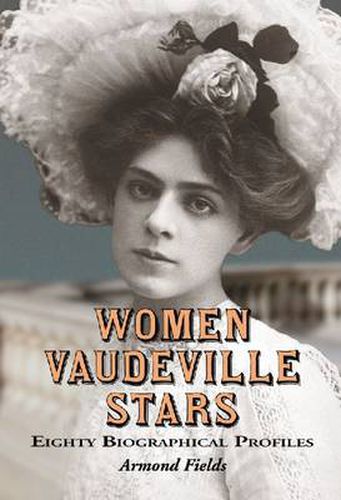Readings Newsletter
Become a Readings Member to make your shopping experience even easier.
Sign in or sign up for free!
You’re not far away from qualifying for FREE standard shipping within Australia
You’ve qualified for FREE standard shipping within Australia
The cart is loading…






This title is printed to order. This book may have been self-published. If so, we cannot guarantee the quality of the content. In the main most books will have gone through the editing process however some may not. We therefore suggest that you be aware of this before ordering this book. If in doubt check either the author or publisher’s details as we are unable to accept any returns unless they are faulty. Please contact us if you have any questions.
Mae West, Sarah Bernhardt, Ethel Barrymore and Helen Keller are perhaps among the best known women to appear on vaudeville stages. Each came to vaudeville by a different path and with a different offering: Mae West entered vaudeville with a song and dance routine when she was 13 years old. Ethel Barrymore dropped in on the Palace Theater to present one-act plays. Sarah Bernhardt was being celebrated by the British for her fifty years on the dramatic stage when she agreed to appear in the U.S. Helen Keller appeared on the stages of first-class vaudeville houses with her teacher, Anne Sullivan, telling about how she overcame the handicaps of blindness and deafness. Many other women followed their own paths to become vaudeville headliners. This book tells the stories of 80 who were among the top vaudeville acts in the late 19th century and early 20th century, when entertainment was often live variety shows in theaters across the country. Singers, singer-comediennes, comediennes, dancers, sister acts, actresses, male impersonators and novelty acts are covered as separate categories. Biographies of the performers in each category appear in order of the date they entered vaudeville, an arrangement that allows the reader to trace the history of vaudeville itself. A final section concentrates on the headliners’ heritage, taking a broad look at the group according to ethnic background, socioeconomic background, family life, and other factors, including what happened to them after vaudeville died.
$9.00 standard shipping within Australia
FREE standard shipping within Australia for orders over $100.00
Express & International shipping calculated at checkout
This title is printed to order. This book may have been self-published. If so, we cannot guarantee the quality of the content. In the main most books will have gone through the editing process however some may not. We therefore suggest that you be aware of this before ordering this book. If in doubt check either the author or publisher’s details as we are unable to accept any returns unless they are faulty. Please contact us if you have any questions.
Mae West, Sarah Bernhardt, Ethel Barrymore and Helen Keller are perhaps among the best known women to appear on vaudeville stages. Each came to vaudeville by a different path and with a different offering: Mae West entered vaudeville with a song and dance routine when she was 13 years old. Ethel Barrymore dropped in on the Palace Theater to present one-act plays. Sarah Bernhardt was being celebrated by the British for her fifty years on the dramatic stage when she agreed to appear in the U.S. Helen Keller appeared on the stages of first-class vaudeville houses with her teacher, Anne Sullivan, telling about how she overcame the handicaps of blindness and deafness. Many other women followed their own paths to become vaudeville headliners. This book tells the stories of 80 who were among the top vaudeville acts in the late 19th century and early 20th century, when entertainment was often live variety shows in theaters across the country. Singers, singer-comediennes, comediennes, dancers, sister acts, actresses, male impersonators and novelty acts are covered as separate categories. Biographies of the performers in each category appear in order of the date they entered vaudeville, an arrangement that allows the reader to trace the history of vaudeville itself. A final section concentrates on the headliners’ heritage, taking a broad look at the group according to ethnic background, socioeconomic background, family life, and other factors, including what happened to them after vaudeville died.